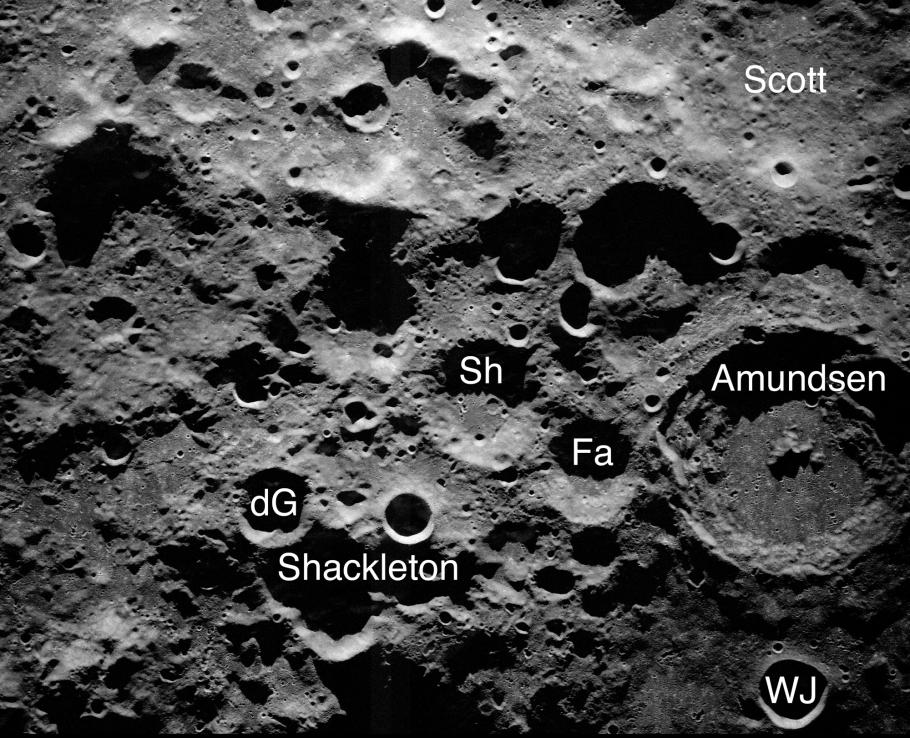This site provides four views of the lunar south pole produced by bistatic radar observations using the Arecibo Observatory and the Greenbank Telescope. The radar wavelength is 12.6 cm. A circularly polarized signal was transmitted and the echo received in both the opposite sense (OC) of circular polarization (i.e. the one expected for a mirror like reflection) and the same sense (SC) to that transmitted. The data are "focused", similar to synthetic aperture radar images, allowing for very fine spatial resolution over a large area.
The four images are:
(1) 100-m resolution, five-look radar backscatter image, derived from data obtained in October 2005, showing a regional view with major features labeled. The polarization is OC.
(2) A color overlay of the 100-m resolution image and the circular polarization ratio (CPR). The CPR values represent averages over 500-m areas to yield an approximate uncertainty of 10%.
(3) A color bar showing the correlation between overlay color and CPR values.
(4) A 20-m resolution, one-look view of the polar area derived from data obtained in April 2005. The radar polarization is "same-sense circular" (SC). There are some artifacts from data acquisition and processing in this image, such as a slightly brighter band down the center and some "aliasing" of bright echoes into the shadowed regions (e.g. Shackleton).
We have a considerable amount of additional raw image data for the south pole, which will be processed and archived with the Planetary Data System. In particular, we will cover a much larger area east and west of the pole, with the best possible geometry for viewing permanently shadowed terrain from the Earth.
These images are provided to assist in mission planning and engineering studies. We request that formal scientific publications based on these data be deferred until they are validated and released through the PDS. Image credit for use in presentations should read: "Courtesy Cornell University/Smithsonian Institution".
Requests for additional information may be directed to Donald Campbell (Cornell University) or Bruce Campbell (Smithsonian Institution).
This work was supported in part by a grant from NASA's Planetary Astronomy Program. We thank the staff at Arecibo Observatory and the Greenbank Telescope for invaluable assistance in collecting the lunar radar data. The Arecibo Observatory is part of the National Astronomy and Ionosphere Center, which is operated by Cornell University under a cooperative agreement with the National Science Foundation (NSF). The Green Bank Telescope is part of the National Radio Astronomy Observatory, a facility of the NSF operated under cooperative agreement by Associated Universities, Inc.



